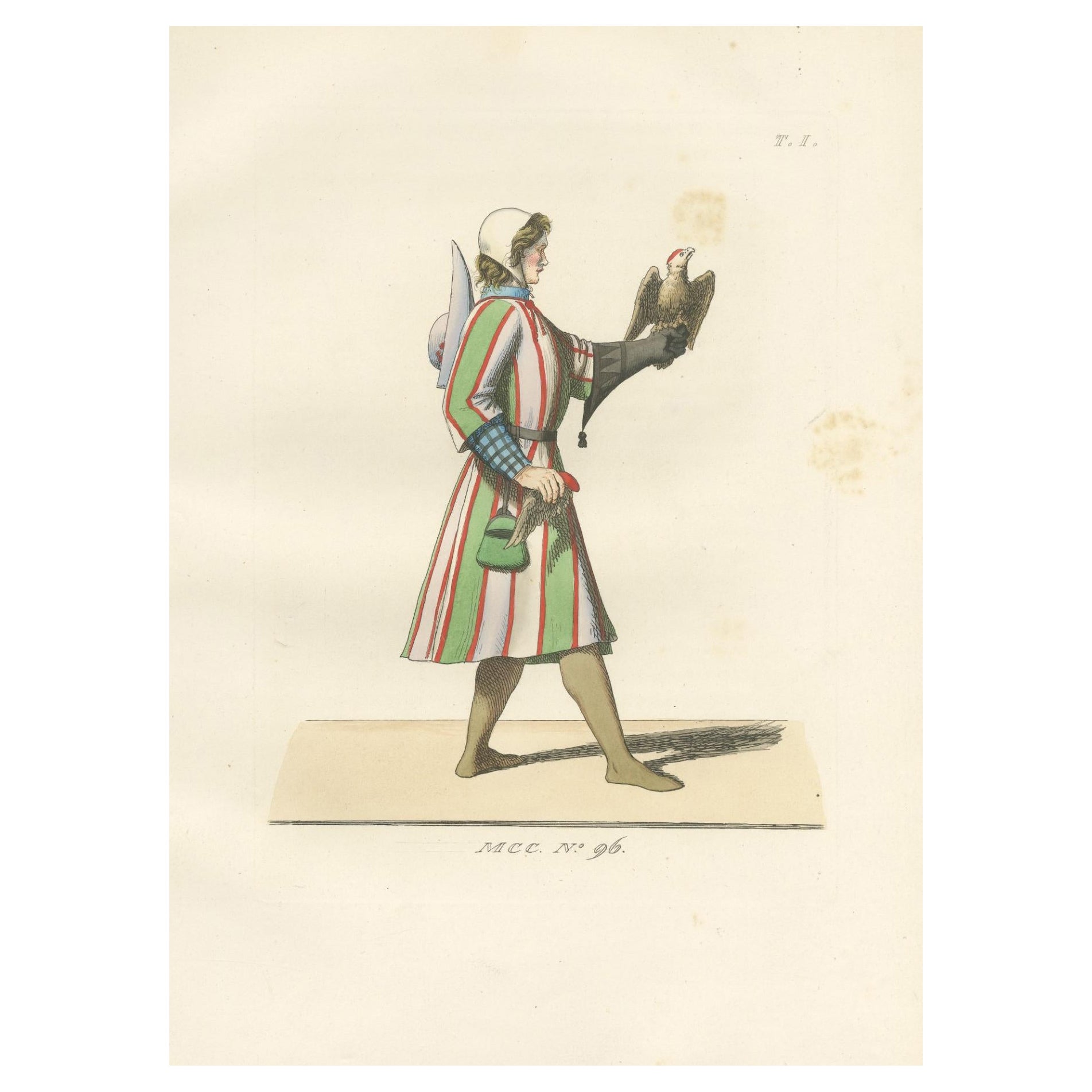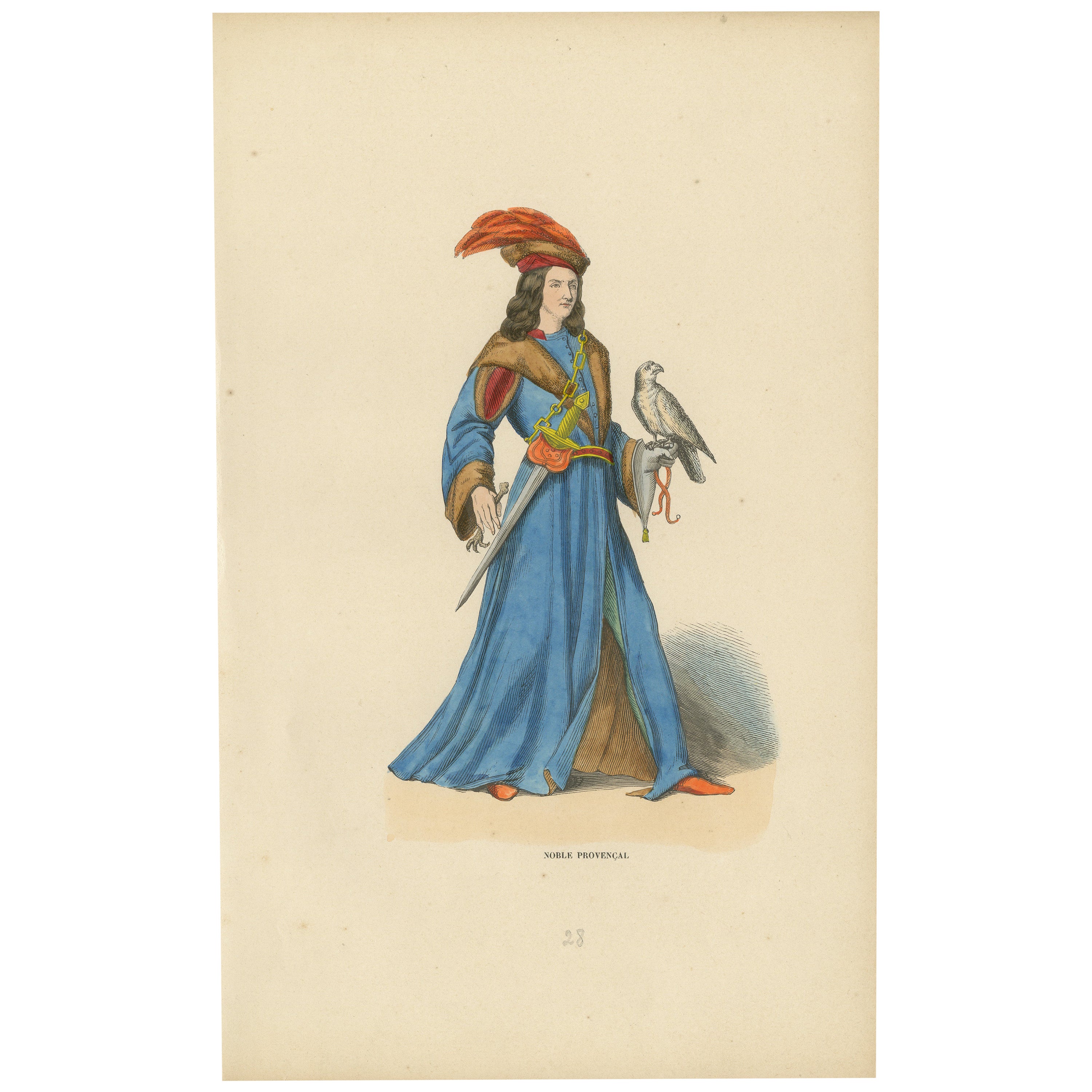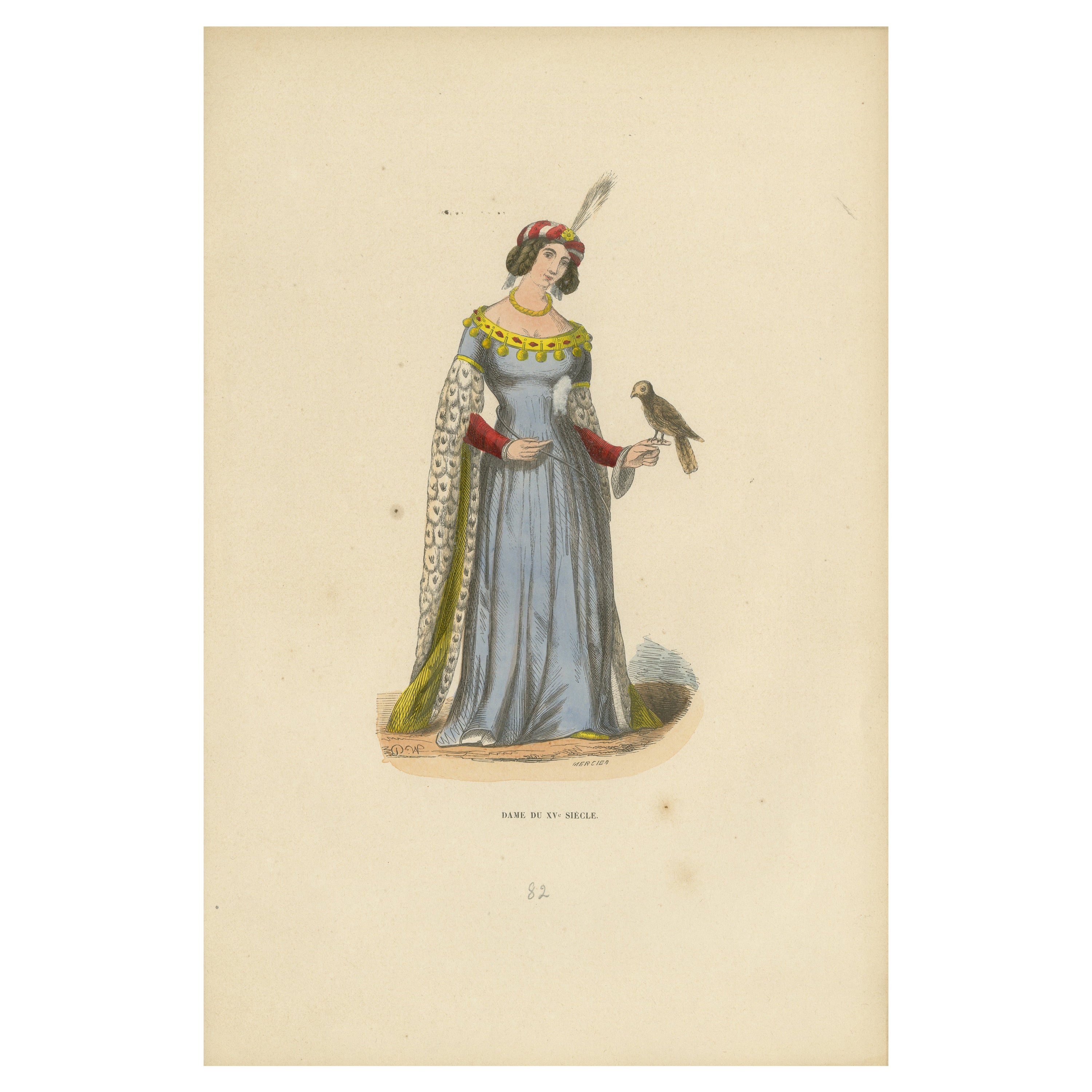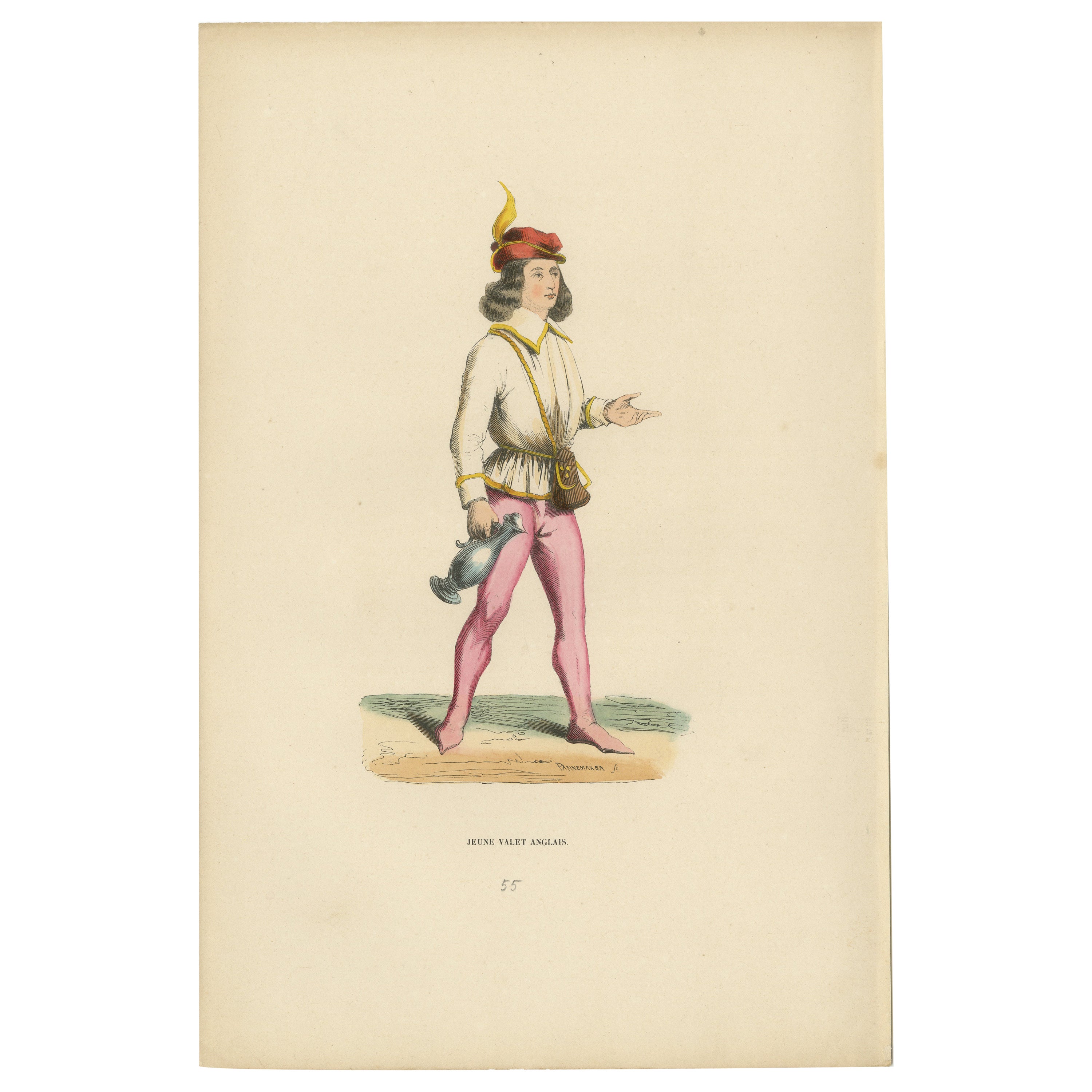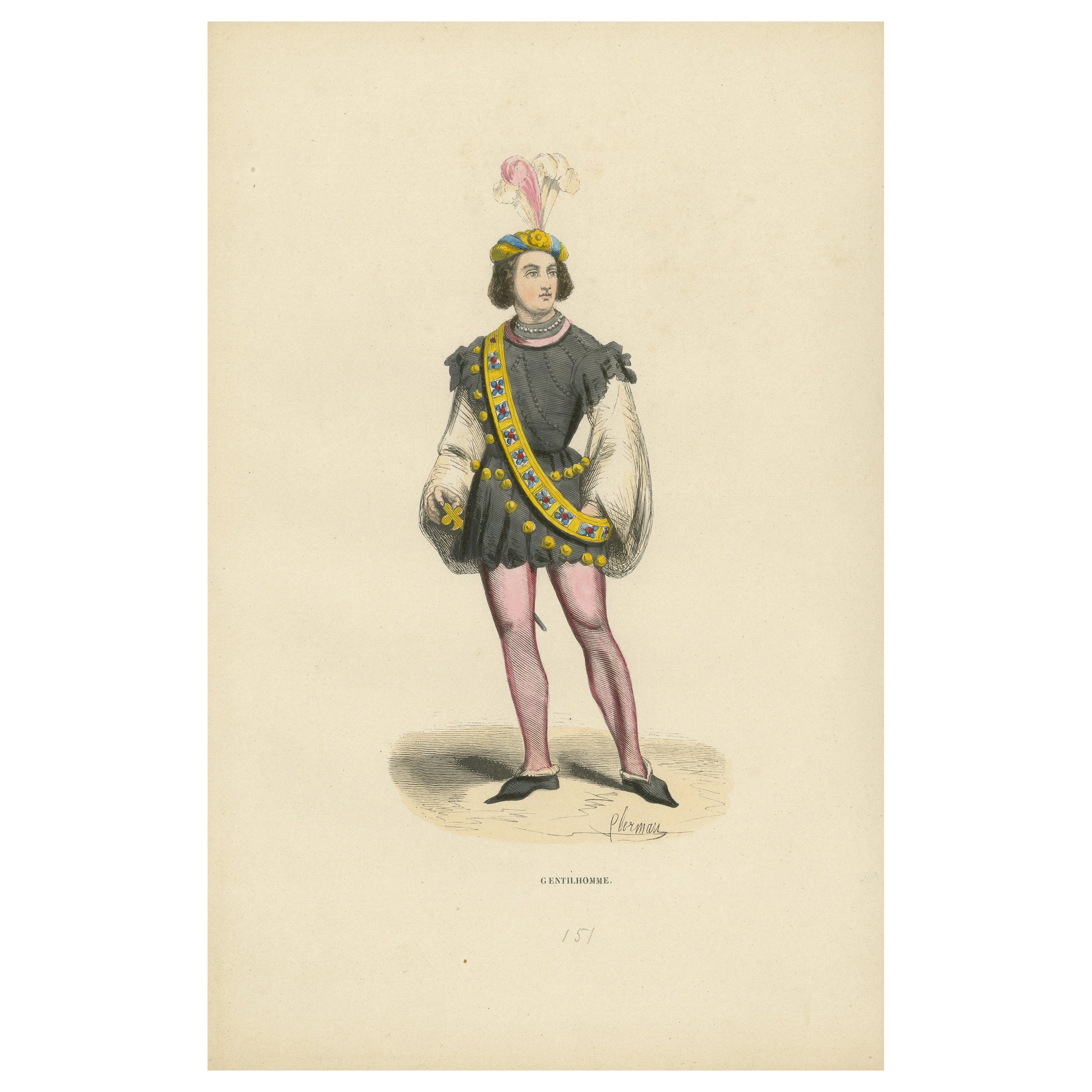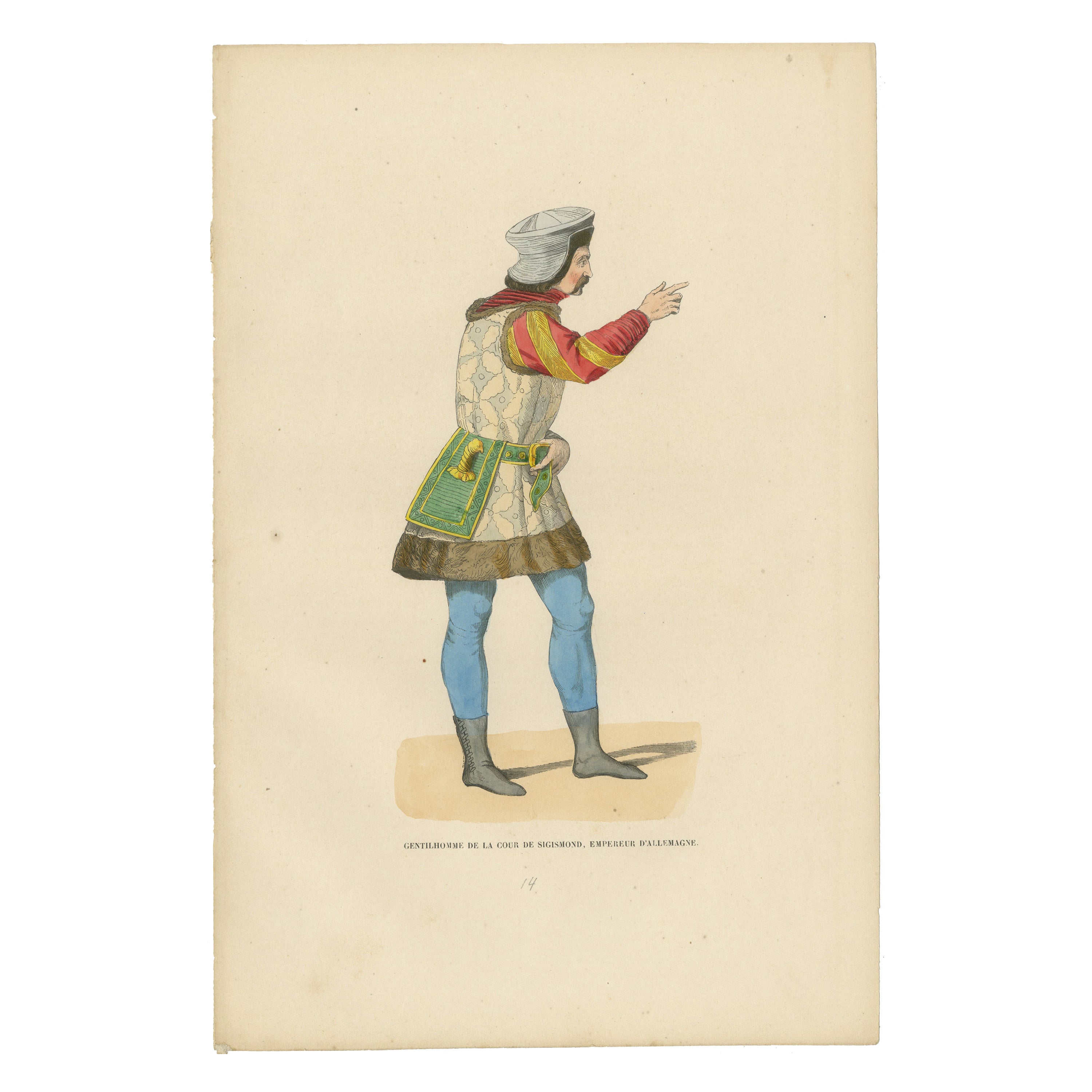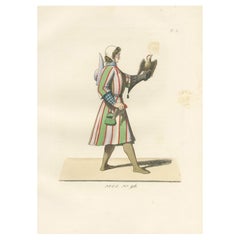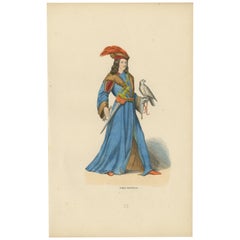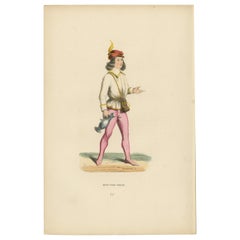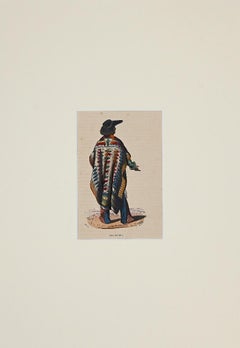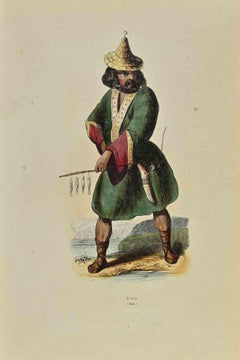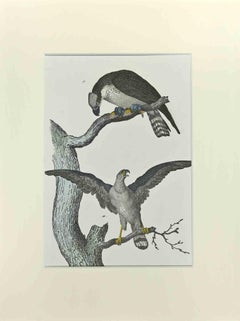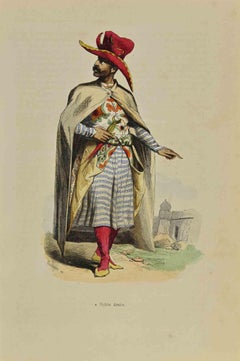Items Similar to The Noble Sport: A German Falconer in 'Costume du Moyen Âge, 1847
Want more images or videos?
Request additional images or videos from the seller
1 of 6
The Noble Sport: A German Falconer in 'Costume du Moyen Âge, 1847
$170.13
$212.6620% Off
£127.52
£159.4020% Off
€144
€18020% Off
CA$233.73
CA$292.1620% Off
A$260.94
A$326.1720% Off
CHF 136.73
CHF 170.9120% Off
MX$3,194.11
MX$3,992.6420% Off
NOK 1,736.43
NOK 2,170.5420% Off
SEK 1,637.23
SEK 2,046.5420% Off
DKK 1,096.18
DKK 1,370.2320% Off
Shipping
Retrieving quote...The 1stDibs Promise:
Authenticity Guarantee,
Money-Back Guarantee,
24-Hour Cancellation
About the Item
Title: "The Noble Sport: A German Falconer in 'Costume du Moyen Âge'"
Description: This lithograph from "Costume du Moyen Âge," produced in 1847, showcases a German falconer in the midst of his craft. Falconry, a popular sport and status symbol among the nobility, is depicted here with historical accuracy and artistic detail. The falconer is dressed in a multi-colored striped tunic, cinched at the waist, which allows for freedom of movement necessary for handling his bird of prey.
He is captured in the act of releasing his falcon, which is shown stretching its wings, ready to take flight. The falconer's attire includes a protective glove on his left hand to prevent injury from the falcon's talons, a practical component of the falconer's equipment. His expression is one of focus and anticipation, watching his bird ascend into the sky.
The striped tunic is topped with a short cape in a bold red, and his leggings are a contrasting dark color, tucked into simple shoes suitable for outdoor activity. His head is covered with a cap that matches his tunic, completing the ensemble.
The background is understated, providing a neutral setting that draws attention to the falconer and his vibrant attire. This lithograph not only represents the attire of a falconer from the period but also captures the essence of falconry as a noble pursuit, emphasizing the close relationship between the falconer and his bird, as well as the skill and training involved in this medieval pastime. The image is a celebration of the historical tradition of falconry, highlighting its importance in cultural and social contexts of the Middle Ages.
The colors have a nice glow over them. Historically, egg whites, known as glair, and sometimes egg yolk were indeed used in illumination and painting, particularly in manuscripts, to give colors a brighter appearance and to add a sheen or gloss to the work. This technique was quite common during the Middle Ages and into the Renaissance.
Egg whites can be applied as a varnish over pigments to enhance their brightness and to protect the colors. This application could make the colors appear more vivid and also add a slight glossy sheen to the surface of the image.
Egg yolk, on the other hand, was commonly used as a binding agent in paint. It forms the basis of tempera paint, a medium that was widely used before the advent of oil painting. Egg yolk helps to create a durable and long-lasting color that adheres well to various surfaces.
In the context of the print from 1847, it's less likely that egg whites or yolks were used directly on the print, as by that time, commercial printing processes would have been more advanced and less reliant on such manual methods. However, if this print is a representation of an earlier style or is meant to mimic the appearance of hand-painted manuscripts, the original artists might have employed techniques or materials that gave a similar effect to those achieved with egg-based binders and varnishes.
- Dimensions:Height: 10.63 in (27 cm)Width: 7.09 in (18 cm)Depth: 0 in (0.02 mm)
- Materials and Techniques:
- Period:
- Date of Manufacture:1847
- Condition:Good. Overal light toning and light soiling but the image itself clean and hand-colored almost 200 years ago and still in expliciet colors. Aged paper with typically warm, yellowish-brown hue, mostly around the edges. Study the images carefully.
- Seller Location:Langweer, NL
- Reference Number:Seller: BG-13635-1221stDibs: LU3054337927712
About the Seller
5.0
Recognized Seller
These prestigious sellers are industry leaders and represent the highest echelon for item quality and design.
Platinum Seller
Premium sellers with a 4.7+ rating and 24-hour response times
Established in 2009
1stDibs seller since 2017
2,511 sales on 1stDibs
Typical response time: <1 hour
- ShippingRetrieving quote...Shipping from: Langweer, Netherlands
- Return Policy
Authenticity Guarantee
In the unlikely event there’s an issue with an item’s authenticity, contact us within 1 year for a full refund. DetailsMoney-Back Guarantee
If your item is not as described, is damaged in transit, or does not arrive, contact us within 7 days for a full refund. Details24-Hour Cancellation
You have a 24-hour grace period in which to reconsider your purchase, with no questions asked.Vetted Professional Sellers
Our world-class sellers must adhere to strict standards for service and quality, maintaining the integrity of our listings.Price-Match Guarantee
If you find that a seller listed the same item for a lower price elsewhere, we’ll match it.Trusted Global Delivery
Our best-in-class carrier network provides specialized shipping options worldwide, including custom delivery.More From This Seller
View All15th Century Falconry Costume – Falconer with Hawk, Antique Print 1845
Located in Langweer, NL
Falconer in Striped Livery with Hunting Hawk, circa 15th Century
This engaging hand-coloured engraving, plate MCCC No 96 from the celebrated 1845 publication Costumes Historiques de...
Category
Antique Mid-19th Century French Prints
Materials
Paper
Original Hand-colored Lithograph of The Falconer: A Noble of Provence, 1845
Located in Langweer, NL
This is an original antique print that shows a figure labeled "Noble Provençal," which means "Provençal Noble," referring to a nobleman from Provence, a historical province in southe...
Category
Antique 1840s Prints
Materials
Paper
$207 Sale Price
20% Off
Noble Falconer: Lady of the 15th Century, 1847
Located in Langweer, NL
Title: "Noble Falconer: Lady of the 15th Century"
Description: This print captures the noble pastime of falconry, a sport historically associated with the aristocracy, through the p...
Category
Antique 1840s Prints
Materials
Paper
$122 Sale Price
20% Off
The English Squire: A Portrait of Service and Style, Original Engraving of 1847
Located in Langweer, NL
This antique hand-colored print originates from the same "Costume du Moyen Age" series from 1847 and depicts a young English squire, an attendant to a knight during the medieval peri...
Category
Antique 1840s Prints
Materials
Paper
$122 Sale Price
20% Off
The Gallant Courtier: A Nobleman's Fashion in 'Costume du Moyen Âge, 1847
Located in Langweer, NL
Title: "The Gallant Courtier: A Nobleman's Fashion in 'Costume du Moyen Âge'"
Description: This 1847 lithograph from the "Costume du Moyen Âge" collection depicts a nobleman dressed...
Category
Antique 1840s Prints
Materials
Paper
$132 Sale Price
20% Off
Courtly Splendor: A Nobleman at Emperor Sigismund's Court, 1847
Located in Langweer, NL
The image depicts a man identified as a "Gentilhomme de la cour de Sigismond, empereur d'Allemagne," which translates to "Gentleman of the court of Sigismund, Emperor of Germany."
This individual is portrayed in a profile stance, dressed in attire that is indicative of the high-status courtiers during the time of Emperor Sigismund, who reigned in the early 15th century. He is wearing a turban-like headgear, which reflects the influence of Eastern fashion on European court attire, possibly due to the Ottoman influence or the general exchange of culture during the Crusades and subsequent interactions.
His doublet is richly patterned and he has puffed sleeves in red, which were fashionable among the nobility during the period. The garment is accented with a decorative belt that holds what appears to be a purse or a pouch. He also sports tight blue hose and pointed shoes, which complete the ensemble typical of a nobleman or a high-ranking court official in the Holy Roman Empire.
Egg whites can be applied as a varnish over pigments to enhance their brightness and to protect the colors. This application could make the colors appear more vivid and also add a slight glossy sheen to the surface of the image.
Egg yolk, on the other hand, was commonly used as a binding agent in paint. It forms the basis of tempera paint, a medium that was widely used before the advent of oil painting. Egg yolk helps to create a durable and long-lasting color that adheres well to various surfaces.
In the context of the print from 1847, it's less likely that egg whites or yolks were used directly on the print, as by that time, commercial printing processes would have been more advanced and less reliant on such manual methods. However, if this print is a representation of an earlier style or is meant to mimic the appearance of hand-painted manuscripts...
Category
Antique 1840s Prints
Materials
Paper
$151 Sale Price
20% Off
You May Also Like
Man from Puebla - Original Lithograph - 1849
Located in Roma, IT
Man from Puebla is an original hand-watercolored lithograph on ivory paper by Anonymous Artist of 19th Century, in 1849.
In excellent conditions: As good as new.
Not signed. Title...
Category
1840s Modern Figurative Prints
Materials
Paper, Lithograph
Ainos - Lithograph by Auguste Wahlen - 1844
Located in Roma, IT
Ainos is a lithograph made by Auguste Wahlen in 1844.
Hand colored.
Good condition.
At the center of the artwork is the original title "Ainos".
The work is part of Suite Moeurs, ...
Category
1840s Modern Figurative Prints
Materials
Lithograph
Eagle Fischerman - Etching by Johann Friedrich Naumann - 1840
Located in Roma, IT
Eagle Fisherman is an etching hand colored realized by Gotthilf Heinrich von Schubert - Johann Friedrich Naumann, Illustration from Natural history of birds in pictures, published by...
Category
1840s Modern Figurative Prints
Materials
Etching
Noble Arab - Lithograph by Auguste Wahlen - 1844
Located in Roma, IT
Noble Arab is a lithograph made by Auguste Wahlen in 1844.
Hand colored.
Good condition.
At the center of the artwork is the original title "Noble Arabe".
The work is part of Sui...
Category
1840s Modern Figurative Prints
Materials
Lithograph
Singing Falcon - Etching by Johann Friedrich Naumann - 1840
Located in Roma, IT
Singing Falcon is an Etching hand colored realized by Gotthilf Heinrich von Schubert - Johann Friedrich Naumann, Illustration from Natural history of birds in pictures, published by ...
Category
1840s Modern Figurative Prints
Materials
Etching
Circus, Prince of the Great Cabarde - Lithograph by Auguste Wahlen - 1844
Located in Roma, IT
Circus, Prince of the Great Cabarde is a lithograph made by Auguste Wahlen in 1844.
Hand colored.
Good condition.
At the center of the artwork is the original title "Circassien , ...
Category
1840s Modern Figurative Prints
Materials
Lithograph
More Ways To Browse
Antique Falconry
Falcon Watch
Antique Silver Boxes Repousse
Antique Storm Glass
Antique Thimbles
Antique Victorian Grandfather Clock
Antique Wooden Swan
Art Deco Bed Frame Queen
Art Deco Buffet Mirror
Art Deco Desk Statue
Art Deco Full Bed
Art Deco Glass Shelving
Astronomical Clock
Baker Dining Buffet
Baker Neoclassical Dining
Baker New World Collection
Baroque Headboard
Bear Bookends
